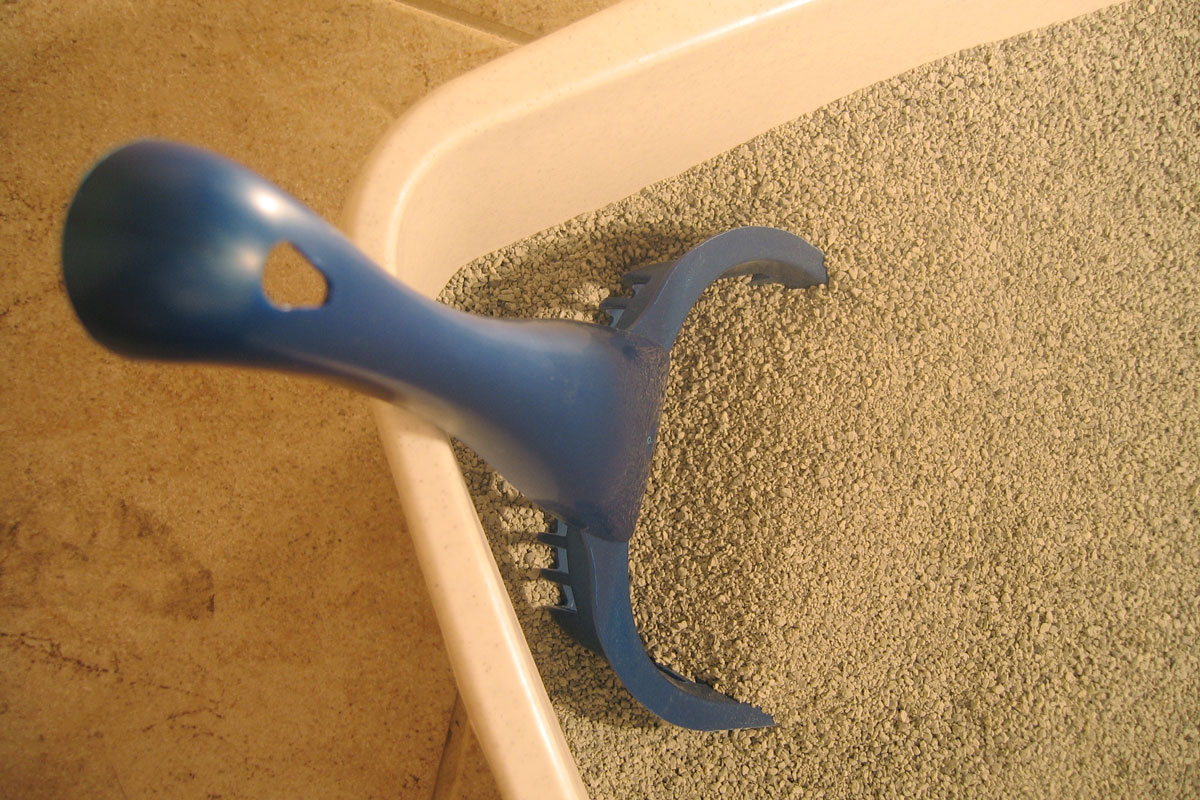Came across some wiggle-woes in your kitty's litter box, did you? Seeing maggots is enough to make your skin crawl, right? But there is no need for a meltdown; this handy guide is here to help! Maggots in your cat litter might be a shocker, but it's not the end of the world.
Sure, it's gross and concerning, but you're about to gain a game plan on how to tackle this issue. We're diving into this 'maggot mystery,' and you'll soon discover the whys, the whats, and the hows.
Are the health and safety of your feline friend in jeopardy? What do you do when you see these tiny invaders? How did they even get there? These questions and more are what we've dug into, and we're ready to spill the beans (but not too many, just enough to keep you on your toes).
Operation: Wiggle-Woe Wipeout
Maggots: Did you spot those squiggly squatters? It's evacuation time! Empty that litter box like your life (or at least your sanity) depends on it. Remember, thoroughness is your best friend here.
Following this, initiate 'Operation: Deep Clean.' Grab your gloves, roll up your sleeves, and show that litter box who's boss. But don't stop there.
Get investigative. Channel your inner Sherlock and figure out how those pesky maggots made your cat's litter box their home sweet home. This is your first step in ensuring that your kitty's throne stays pristine, always!

Maggots In Cat Litter - What To Do?
Suppose you noticed maggots in your cat's litter box.
First, don't allow your cats near the box until the box and area are cleaned and sanitized. This is to prevent the maggots from getting caught in the cat's coat and traveling to other areas of your home.
Next, get rid of the contaminated litter.
To do so, remove all litter into a plastic trash bag, tie it tightly to prevent the maggots from escaping the bag, and toss it into the trash bin.
Your next step is to clean the litter box with gentle dish soap or purchase a new litter box.
Clean the litter box area with a gentle soap that will not irritate your cats. Consider setting a fly trap near your litter box to prevent this issue from happening again in the future.
Why Are Maggots in the Cat Litter Box?

Generally, there are several reasons why maggots might be found in the cat litter box. The most common cause is that flies lay eggs on the feces that hatch into maggots.
Also, if a cat has an infected external wound in which flies have laid larvae, this can travel from place to place. And this leads to maggots developing quickly in litter boxes or other areas of your home.
Are these even maggots?
If you're seeing tiny white squirming "thingies," make sure they're actually maggots and not some intestinal worms.
We hate to gross you out even more, but hey, we're dealing with maggots in the litter box, so it's already pretty nauseating, right? At least we can share helpful information.
Maggots are essentially fly larvae that will eventually become some fly.
Worms are, well, worms. Cats can be infected with several types of worms. The most common ones are tapeworms and roundworms.
Tapeworms, roundworms, and maggots: what are the differences
Tapeworms can live inside the cat's guts. They are segmented creatures and occasionally shed segments of their body, which then come out in the cat's feces.
Roundworms are different types of worms that can come out of a cat's behind. They are typically long and come out in an entangled mass that looks a bit like spaghetti.
Maggots are different. They are chubbier and more developed than intestinal worms. Maggots are not designed to survive inside a cat's digestive system, so if you're seeing them in the litterbox, that means they hatched and developed in the feces.
If you suspect that your cat may have tapeworms or other forms of intestinal parasites, contact your veterinarian for further assistance and recommendations.
How to Clean Up Maggots?

Once you discover maggots, you will need to clean the litter box immediately. Pour the litter into a garbage bag and tie it shut to prevent the maggots from escaping the bag.
Then, use dish soap or a litter box cleaner to scrub the litter box thoroughly. Allow the litter box to dry completely before refilling it with cat litter.
Remember to clean the floor and surrounding areas to remove any larvae and debris that will otherwise draw more flies.
Cleaning Product Precautions for Cat Parents
Several online blogs and websites claim that using a solution of hydrogen-based bleach and water is a suitable method for sanitizing litter boxes. However, the Humane Society states that bleach, hydrogen peroxide, and several other household cleaners are toxic to cats and should be avoided when cleaning your cats' litter box.
For the best results, use gentle dish soap and remember to rinse the litter box thoroughly.
Are you interested in learning about cleaning cat litter boxes with vinegar? Click here to read How to Clean a Litter Box with Vinegar.
How to Get Rid of Flies in the Litter Box?
The maggots probably hatched inside the litterbox because flies came in and laid their eggs in the feces. To prevent the problem from repeating itself, you should address the problem of flies in and around the litterbox.
There are several simple methods for eliminating or significantly reducing flies around your cat's litter box.
- Venus fly traps should be added around or on top of the litter box.
- Set a fly trap near the litter box.
- Dab a few drops of vinegar on the sides of the litter box.
- Purchase a new litter box.
Can Flies Lay Eggs in Cat Litter?

Yes. That's probably how you got the maggots there.
Flies will lay eggs in the cat's feces if they can get to them. Those eggs will hatch into maggots. The best way to prevent these issues from occurring is to scoop the litter box twice daily and change the litter as directed.
Also, keep your litter box in a well-ventilated area to prevent insects from accessing the litter box.
Pro tip:
If you have more than one cat, make sure to have one litter box per cat and then one more. This should help you keep the boxes clean and make them far less attractive to flying insects.
My Cat's Poop Has Maggots In It - Did the Cat swallow them?
As mentioned before, in all likelihood, the maggots hatched from eggs that flies laid in the feces.
However, there is also the possibility that your cat had indeed ingested larvae.
According to the Merck Manual, another explanation can be Pseudomyiasis (false strike). This condition occurs when the cats groom themselves and ingest larvae from eggs on their coat or an infected wound.
It is fairly common for cats to swallow larvae while grooming themselves, which will pass through the digestive system intact and turn into maggots within the feces in the litter box.
If you think this may be the case, contact your veterinarian for further assistance and recommendations as soon as possible. Parasites are dangerous for your cat's health, and if untreated, they could result in poor health and death.
As a responsible pet parent, you probably wondered how often your cat should use the litter box. Click here to read How Often Do Cats Pee and Poop?
How Do You Dispose of Cat Litter?
Because most cat litter is not biodegradable, the best way to dispose of cat litter is to place the litter waste into a strong garbage bag. Or you can use a litter liner and dump the bag in the trash receptacle.
Never put cat litter waste into the recycling bin because it is not recyclable.
Remember to never discard cat litter into a compost bin or tumbler. This is because of the presence of protozoan parasite Toxoplasma gondii in cat feces.
Toxoplasma will add bacteria to the compost pile, which is harmful to animals and humans in the surrounding environments.
Suggestions for Disposal of Cat Litter
Most cat parents love their cats and dislike caring for their litter boxes. Consider using litter box liners to make changing your cat's litter box a little bit easier.
Place the litter box liner into the empty litter box and add the clean litter on top of the liner.
When it is time to empty the litter box, pull the drawstrings to lift the soiled litter and place it into the garbage receptacle.
General Health and Safety Recommendations
Always wear gloves when you clean or scoop your cat's litter box for the best results. Then, put the waste into a pet waste bag and toss it into a garbage receptacle.
Also, if you are dust-sensitive or have respiratory issues like asthma, consider wearing a mask. Wear protection when cleaning or changing the litter box to avoid inhaling dust particles and potentially harmful germs.
Word of caution: if you or someone in your home is pregnant or may be pregnant. Do not change or clean the litter boxes to avoid contact with Toxoplasma in cat feces. This is toxic to pregnant people.
An End To The Maggot Saga

In this article, we examined how to remove maggots correctly and reviewed associated safety concerns. We also looked at how to manage cat litter box waste correctly.
We hope this article was helpful to you. Please visit litter-boxes.com soon for more engaging and informative content!
Before you go, please be sure to check out some of our other posts for more information about cat litter.
Can You Keep A Litter Box In Your Bedroom?
How Long Does Cat Litter Typically Last? [By Number Of Cats and Type of Litter]






